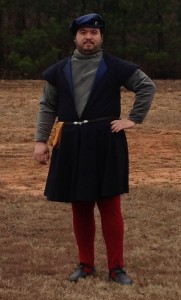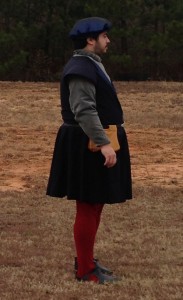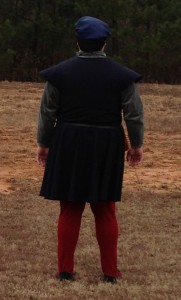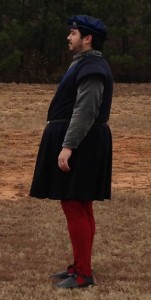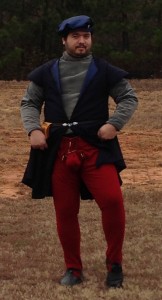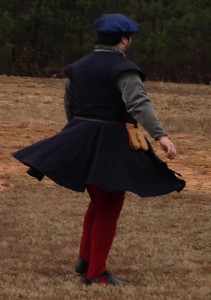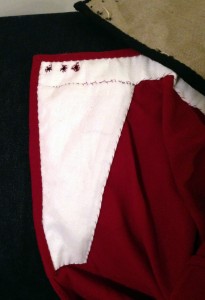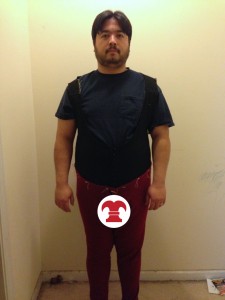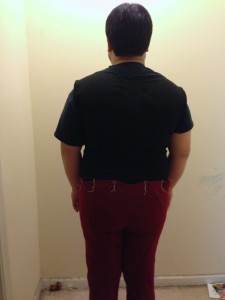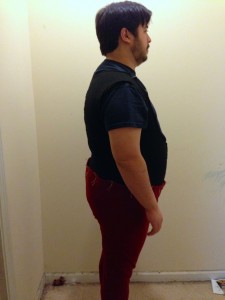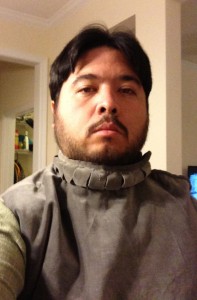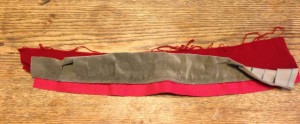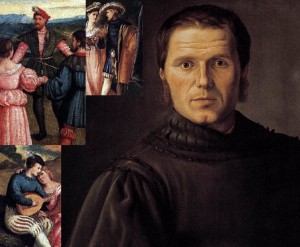 I always enjoy getting out to events in other kingdoms, so I decided to make a trip to Atlantian Twelfth Night to see some friends and do some dancing. The theme is very specific: 1543 at the court of Henry VIII. I figure there were some Italians at court, so I went looking for something to wear.
I always enjoy getting out to events in other kingdoms, so I decided to make a trip to Atlantian Twelfth Night to see some friends and do some dancing. The theme is very specific: 1543 at the court of Henry VIII. I figure there were some Italians at court, so I went looking for something to wear.
I have had a love for these funky slashy collars for ages. They only show up for a brief time, and there aren’t a lot of good images, but there they are. You can also see it on Prince Henry in Ever After (not the most accurate costume ever, but clearly inspired by the style). I poked around for a while and decided to use as my primary reference the guy in the back of the dance circle in Veronese’s Outdoors Entertainment with Dancers (you can see him in the upper left portion of the image at left). There’s not a lot of detail available in the image, so I’m trying to make my best guess as to construction from some other sources, including Beham’s somewhat earlier and more German Portrait of a Man. There’s also some references and images for similar side-closing crossover type garments in Moda a Firenze (Cosimo). Armed with these resources, I forged ahead.
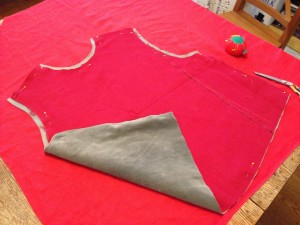 I went to the stash for fabric, and decided to use a lovely grey cotton velvet that I scored from a friend’s stash purge. I dug out some heavy red cotton that had been cut out for a tunic a million years ago and manged to squeeze out enough bits for interlinings. The lining is a thin red linen that is a massive pain to work with, wrinkles like mad, and is just not good for anything but linings.
I went to the stash for fabric, and decided to use a lovely grey cotton velvet that I scored from a friend’s stash purge. I dug out some heavy red cotton that had been cut out for a tunic a million years ago and manged to squeeze out enough bits for interlinings. The lining is a thin red linen that is a massive pain to work with, wrinkles like mad, and is just not good for anything but linings.
Starting from the body block I made fairly recently, I cut up an old bed sheet to try to work out the pattern for this thing. I knew I wanted it to fasten at the left side, but I wasn’t entirely sure how far over the under layer should extend. I’m still a little undecided on that, but we’ll get there later. After mocking it up and tinkering some more with just the interlining, I went ahead and started the real construction.
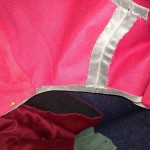 I sewed together the outer shell of velvet and interlining, and tacked the seam allowances down inside to keep everything laying flat. I didn’t want to attempt putting an iron on the velvet, though I imagine it wouldn’t be too disastrous if I were careful. I cut the velvet with some extra at the neck and armscyes so I could turn it over the edge of the interlining and attach the lining there by hand. The rest of the edges were basted and then bound with a strip of the velvet.
I sewed together the outer shell of velvet and interlining, and tacked the seam allowances down inside to keep everything laying flat. I didn’t want to attempt putting an iron on the velvet, though I imagine it wouldn’t be too disastrous if I were careful. I cut the velvet with some extra at the neck and armscyes so I could turn it over the edge of the interlining and attach the lining there by hand. The rest of the edges were basted and then bound with a strip of the velvet.
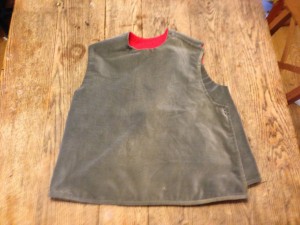
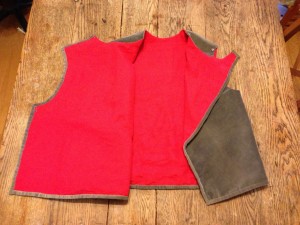
The main body of the doublet is pretty much together now, minus some of the fastenings. I’ve got a hook and eye to secure the inner flap the the right shoulder, and hooks and eyes at the left shoulder. The left side will be closed with three points which will require working some more eyelets.
I’m still undecided on what to do as far as attaching the hose. You can’t see what’s going on at the waist on my primary reference, though the seated musician on the right side of the painting looks like he may have some visible points at the waist. I’m trying to figure out exactly how the points would work at the front of the doublet, and have yet to come up with anything entirely satisfactory. I’m contemplating making (actually recycling) an imbusto to go underneath just to have something to point the hose to. I think I’ll finish up the points on the doublet, make the hose, and then see what the best way to attach things will be.

